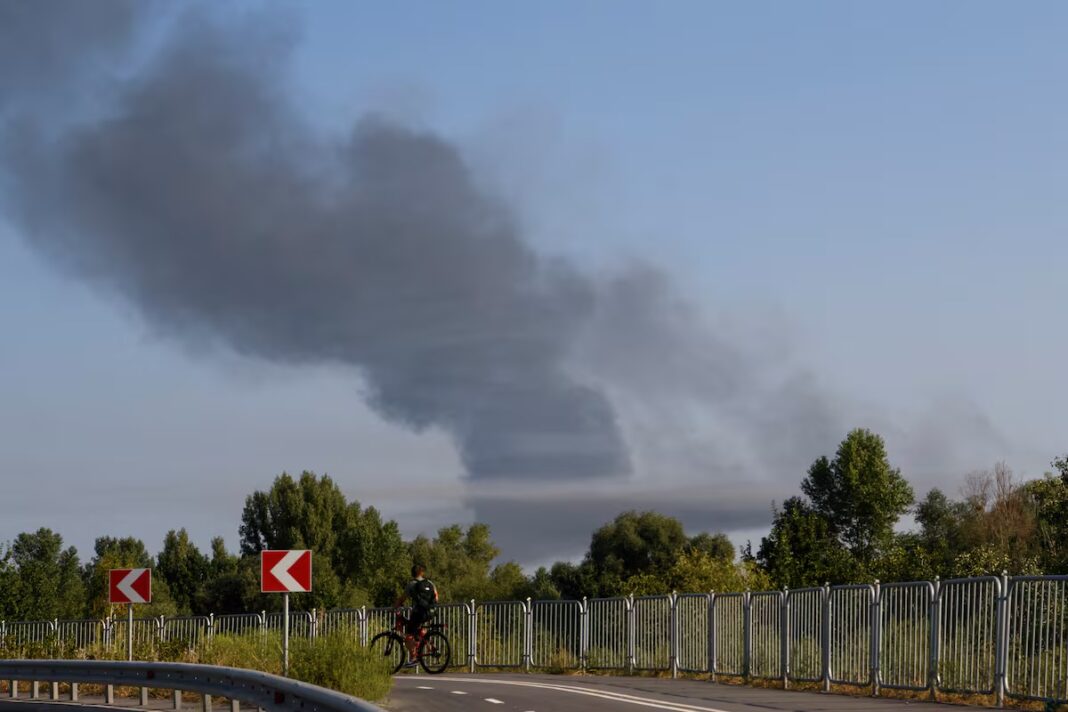Russia launched one of its largest missile and drone attacks on Ukraine in recent weeks, targeting critical infrastructure and killing at least five people. The strike, which occurred on Monday, has escalated tensions in the region and raised concerns among neighboring countries, including Poland.
Massive Attack on Critical Infrastructure
Ukraine’s President Volodymyr Zelenskiy said this attack was one of the biggest since Russia started its full invasion over two and a half years ago. More than 100 missiles and an equal number of Shahed drones were launched. They targeted key energy facilities across the country, causing widespread power cuts and water outages in many regions, including parts of Kyiv.
The attack hit several regions: Rivne, Volyn, Khmelnytsk, Zhytomyr, Lviv, Dnipropetrovsk, Kirovohrad, Vinnytsia, Zaporizhzhia, and Odesa. Ukraine’s energy sector was badly damaged, with a hydropower plant in the Kyiv region among the targets. The governor of the Kyiv region, Ruslan Kravchenko, said the dam wasn’t critically damaged.
Civilian Casualties and Widespread Destruction
Around five people were killed in the attack. A 69-year-old man in the Dnipropetrovsk region and a man in the Zaporizhzhia region were among the confirmed victims. Additional fatalities were reported in the regions of Kharkiv, Zhytomyr, and Volyn. In Lutsk, an apartment block was damaged by the strikes, causing further alarm among residents.
Blasts were also reported in central Kyiv, with air defense systems working to intercept the incoming missiles and drones. The Ukrainian air force claimed to have shot down around 15 missiles and nearly 20 drones aimed at the capital.
Impact on Neighbouring Countries
The attack’s repercussions extended beyond Ukraine’s borders. In neighbouring Poland, a NATO member, authorities immediately launched a search operation after a drone, or similar object, entered its airspace. The Polish military suspects that the drone may have landed on its territory, though no further details were provided.
Moldova, which shares an electricity grid with Ukraine, also reported minor disruptions to its power network as a result of the attack. The tragedy serves as a reminder of the conflict’s expanding regional effects.
Ukraine’s Response and Calls for Western Support
In the aftermath of the attack, top Ukrainian officials renewed their calls for Western allies to provide long-range weapons to strike targets inside Russia. Ukraine has developed several models of long-range attack drones to hit targets deep within Russian territory. Which includes oil refineries and military airfields.
President Zelenskiy emphasised the need for continued support from Western nations, particularly in bolstering Ukraine’s air defense capabilities. He also reiterated his call for countries like Poland to assist in shooting down missiles and drones over Ukrainian airspace.
Over the weekend, Zelenskiy announced the development of a new “drone missile” that had been successfully used against Russia. He claimed that this new weapon is more powerful and faster than anything previously in Ukraine’s arsenal.
Russia’s Justification for the Attack
Russia’s defense ministry confirmed they attacked Ukraine using precise weapons. They said they targeted important energy places that help Ukraine’s military. The targets included power stations, gas stations, and places where aircraft weapons are stored. Both Russia and Ukraine say they don’t target civilians and focus on weakening each other’s military strength.
Ongoing Conflict and Rising Tensions
Monday’s attack is part of a broader escalation in the conflict, with both sides intensifying their military efforts. Ukraine is currently making advances in a major cross-border incursion into Russia’s southern Kursk region, while Russian forces are slowly pushing forward in Ukraine’s east, particularly near the transport hub of Pokrovsk.
As the conflict drags on, the international community remains on high alert, with neighboring countries like Poland and Moldova keeping a close watch on developments. The situation underscores the ongoing volatility in the region and the potential for further escalation.

